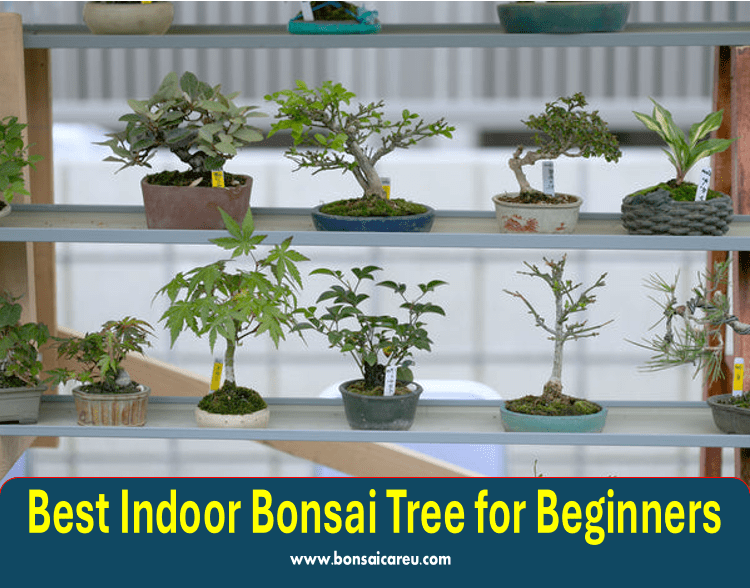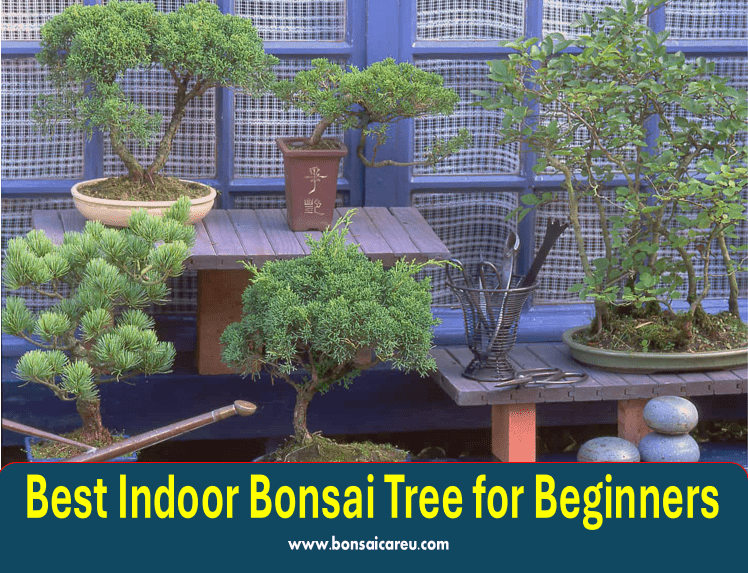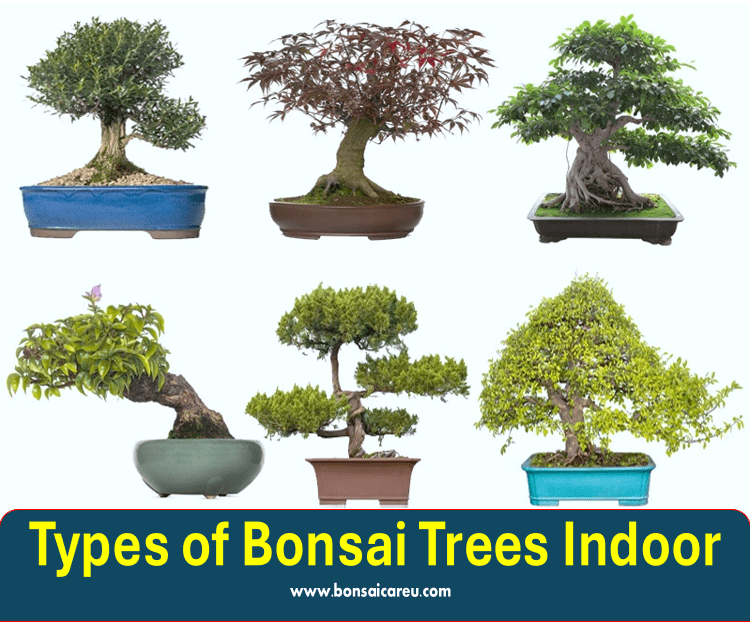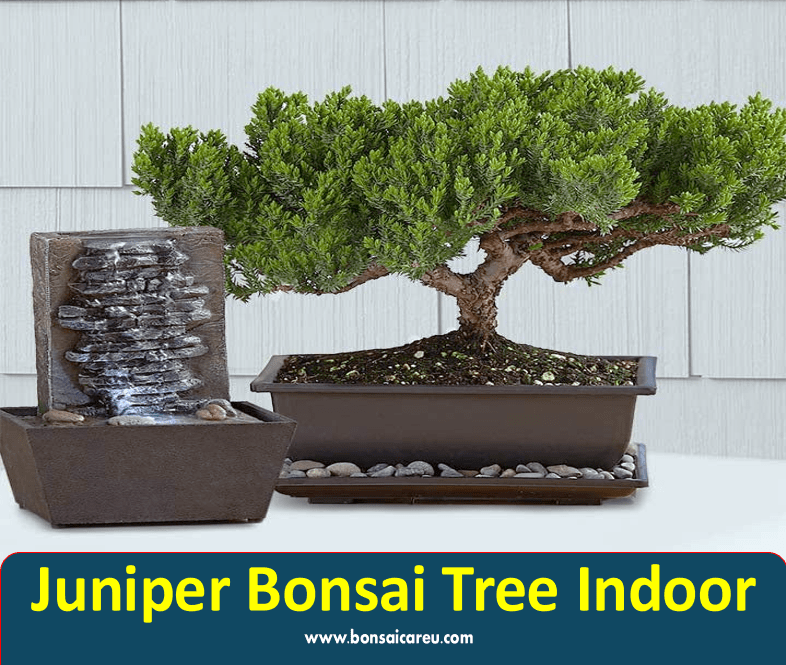Best Indoor Bonsai Tree for Beginners: The best indoor bonsai tree for beginners is the Ficus Bonsai. It is easy to care for and suitable for indoor conditions. The Ficus Bonsai adds natural beauty to any living space with its shiny green leaves and appealing trunk.
Whether you are new to bonsai or have limited gardening experience, this bonsai tree is an excellent choice. Its resilience and tolerance to various light conditions make it perfect for indoor environments. In addition, its small size makes it manageable for beginners, allowing you to enjoy the art of bonsai without feeling overwhelmed.
Discover the joy of growing and nurturing your bonsai tree with the Ficus Bonsai.

Benefits Of Indoor Bonsai Trees
Discover the advantages of having an Indoor Bonsai Tree – the perfect plant for beginners seeking a serene and vibrant living space. With their manageable size and low maintenance, Indoor Bonsai Trees offer a soothing touch of nature indoors.
The Benefits of Indoor Bonsai Trees Indoor bonsai trees are visually appealing and offer a wide range of benefits for beginners and experienced enthusiasts alike. Beyond their aesthetic value, these miniature trees have the potential to impact both the environment and the well-being of individuals positively. Below, we will explore three primary benefits of indoor bonsai trees: improving indoor air quality, enhancing relaxation, and providing stress relief.
Improving Indoor Air Quality
Indoor bonsai trees are renowned for purifying the air within enclosed spaces. These trees actively filter and reduce pollutants such as formaldehyde, benzene, and trichloroethylene through phytoremediation, improving overall air quality. As a result, indoor bonsai trees can help create a healthier and more rejuvenating indoor environment, particularly in areas with limited ventilation or high levels of indoor air pollution.
Enhancing Relaxation and Stress Relief
Indoor bonsai trees can significantly create a serene atmosphere within the home. Their visually calming appearance and connection to nature have been shown to promote relaxation and reduce stress levels. Simply spending time tending to or admiring these miniature trees can offer a peaceful escape from the demands of everyday life, fostering a sense of mindfulness and promoting mental well-being. By considering indoor bonsai trees’ role in improving indoor air quality and promoting relaxation, beginners can better appreciate the overall value of incorporating these unique trees into their living spaces.
As beginners embark on their bonsai journey, they can look forward to a visually striking addition to their home and the numerous benefits these miniature trees bring. In conclusion, indoor bonsai trees offer more than just visual appeal. Their impact on indoor air quality and contribution to relaxation and stress relief make them valuable to any indoor space, especially for beginners seeking to enhance their living environment and overall well-being.
Choosing The Right Indoor Bonsai Tree
When adding a touch of nature and tranquility to your indoor space, there’s nothing quite like a bonsai tree. These miniature trees are visually appealing and allow you to cultivate and care for a living work of art right in your home. However, for beginners, choosing the right indoor bonsai tree can be a bit overwhelming. With so many varieties to choose from, it’s important to consider your environment and the ease of maintenance before deciding. Let’s delve into these factors further:
Consider Your Environment
Choosing an indoor bonsai tree that thrives in your specific environment is crucial for its long-term health and growth. Different varieties of bonsai trees require different sunlight and temperature requirements, so it’s important to consider the conditions in your home or office.
A bright, sunny location near a window is ideal for most indoor bonsai trees. However, if your space lacks natural sunlight or has limited indirect light, you may consider bonsai varieties that can tolerate lower light conditions.
Additionally, it’s important to consider your environment’s temperature and humidity levels. Some bonsai trees prefer cooler temperatures, while others thrive in warmer or more humid conditions. Understanding the needs of your chosen bonsai tree and ensuring that your environment can meet those requirements is essential for its overall well-being.
Ease Of Maintenance
When embarking on your bonsai journey as a beginner, it’s crucial to choose a variety that is relatively easy to maintain. Some bonsai trees require more attention and care, while others are more forgiving and tolerant of occasional neglect.
Consider your availability and commitment to caring for your bonsai tree. If you have a busy schedule or lack experience, it’s advisable to start with a low-maintenance variety. This will allow you to build your confidence and skills as you learn to care for your tree.
It’s also worth considering the size of the bonsai tree, as larger trees may require more maintenance and care to keep them healthy and properly shaped. As a beginner, starting with a smaller bonsai tree can be a practical choice that allows you to focus on developing your bonsai care techniques and understanding the unique needs of your specific variety.
Remember, bonsai tree care is an ongoing process that requires regular attention and knowledge. By choosing a variety that suits your environment and lifestyle, you can set yourself up for success and enjoy the rewards of nurturing a beautiful indoor bonsai tree.
Top Beginner-friendly Indoor Bonsai Trees
Welcome to our guide on the Top Beginner-Friendly Indoor Bonsai Trees. These beginner-friendly options are perfect if you are new to bonsai and looking to cultivate your indoor oasis.
Ficus Bonsai
The Ficus Bonsai is popular for beginners due to its resilience and forgiveness. It thrives in indoor environments and requires minimal maintenance. This versatile tree offers stunning aerial roots and glossy foliage, making it a visually appealing addition to any living space.
Jade Bonsai
Jade Bonsai is a hardy succulent ideal for beginners. With its thick trunk and vibrant green leaves, it is easy to care for and can withstand neglect. It adds a touch of elegance to any room and is known for its longevity, making it a great investment for beginners.
Chinese Elm Bonsai
The Chinese Elm Bonsai is another excellent choice for beginners. This tree is highly adaptable, making it suitable for indoor environments. With its small, leathery leaves and intricate branch structure, the Chinese Elm Bonsai is a visually captivating plant that is easy to shape and style.
Basic Care Tips For Indoor Bonsai Trees
Indoor bonsai trees are a beautiful addition to any space, whether it’s your home, office, or any other indoor setting. While they may look delicate, these miniature trees require careful attention and nurturing. In this article, we will discuss some essential care tips to help beginners achieve success with their indoor bonsai trees.
Watering Techniques
Proper watering is crucial for the health and well-being of your indoor bonsai tree. Here are some important watering techniques to keep in mind:
- Check the soil’s moisture level regularly by sticking your finger about an inch into the soil. If it feels dry, it’s time to water your bonsai.
- Water your tree thoroughly until the water drains out the bottom of the pot. Ensure that the water reaches all parts of the root system.
- Avoid overwatering, as excessive moisture can lead to root rot. Allow the soil to dry out slightly between waterings.
- Consider using a humidity tray, which helps maintain the required moisture levels around the bonsai.
Pruning And Training
Pruning and training are essential for shaping and maintaining the desired appearance of your indoor bonsai tree. Follow these guidelines for successful pruning and training:
- Regularly trim back any overgrown branches or foliage to maintain the bonsai tree’s shape and promote healthy growth.
- Use pruning shears or scissors designed for bonsai trees to make clean cuts and minimize damage.
- When trimming, focus on removing any dead, damaged, or unwanted branches to maintain a balanced and aesthetically pleasing appearance.
- Consider wiring techniques to guide the branches into specific shapes gently. Be careful not to damage the branches or cause them to grow in unnatural positions.
- Remember to periodically check and adjust the wire to avoid wire marks or constrictions as the branches grow.
Common Mistakes To Avoid
Overwatering is a common mistake beginners make with indoor bonsai trees.
Using the wrong type of soil can hinder the growth of your bonsai tree.

Creating A Relaxing Bonsai Display
Discover the best indoor bonsai tree for beginners and create a captivating display that promotes relaxation. With careful selection and proper care, you can enjoy the calming beauty of a bonsai tree in your own home.
Choosing The Right Pot
When creating a relaxing bonsai display, choosing the right pot is essential. The pot you select should complement the overall aesthetic of your bonsai tree and provide the necessary space for the roots to grow and thrive. It’s important to consider the size and shape of your bonsai when selecting a pot and its drainage capabilities. Additionally, the material of the pot can also contribute to the overall ambiance of your display.
Incorporating Decorative Elements
Incorporating decorative elements into your bonsai display can take it to the next level and enhance the relaxing ambiance. Several options exist, such as gravel, small rocks, moss, or miniature figurines. These elements add visual interest to your display and create a sense of tranquility. When incorporating decorative elements, remember to keep them minimal and avoid overcrowding the bonsai tree. The goal is to create a harmonious, balanced composition that promotes relaxation and serenity.
Joining The Bonsai Community
Joining the Bonsai Community is an exciting step for beginners looking to learn, grow, and expand their bonsai knowledge. Becoming a part of the bonsai community allows enthusiasts to connect with like-minded individuals, gain valuable insights, and share their passion for these beautiful miniature trees.
Finding Local Bonsai Clubs
Joining a local bonsai club is a fantastic way for beginners to immerse themselves in the bonsai world. These clubs provide opportunities to meet experienced growers, participate in workshops, and attend events that can enrich one’s understanding of bonsai cultivation. By connecting with local enthusiasts, beginners can access valuable advice, support, and resources to help them thrive in their bonsai journey.
Online Resources And Forums
Online resources and forums offer a wealth of information and support for bonsai beginners. From dedicated websites and social media groups to forums and discussion boards, there are numerous online platforms where enthusiasts can connect, seek advice, and share their experiences. Engaging with these online communities can provide beginners with a global network of fellow bonsai lovers, providing inspiration, guidance, and camaraderie.

Frequently Asked Questions For Best Indoor Bonsai Tree For Beginners
What Is The Easiest Bonsai Tree To Care For Indoors?
The easiest bonsai tree for indoor care is the Ficus Retusa. It thrives in moderate light and is forgiving of minor lapses in care. Regular watering and occasional pruning are key to keeping it healthy.
What Is The Best Tree To Turn Into A Bonsai?
The best trees for bonsai are species with small leaves and branches, like the Ficus, Juniper, and Pine. These varieties are easy to maintain and shape.
What Is The Best Bonsai Tree For A Dark Room?
Consider a ZZ plant or Chinese evergreen bonsai for a dark room, as they thrive with low light levels.
What Is The Quickest Bonsai To Grow?
The quickest bonsai to grow is the Chinese elm. It thrives in a variety of climates and responds well to pruning and styling techniques. With proper care, you can see noticeable growth and development within just a few years.
What Is The Best Indoor Bonsai Tree For Beginners?
Due to their resilience, the Ficus, Jade, or Chinese Elm are great choices for beginners.
How Often Should I Water My Indoor Bonsai Tree?
Water your indoor bonsai tree when the topsoil starts to dry out to maintain its health.
Can Indoor Bonsai Trees Survive In Low-Light Conditions?
Indoor bonsai trees can survive in low-light conditions but thrive in brighter spots.
Conclusion
To conclude, selecting the best indoor bonsai tree for beginners can be an exciting and rewarding experience. By considering factors like ease of care, size, and aesthetic appeal, you can find the perfect bonsai tree to bring a touch of nature indoors.
Remember to provide proper care, such as regular watering and pruning, to ensure your bonsai’s long-term health and beauty. With patience and dedication, you’ll soon enjoy the tranquility and elegance these miniature trees bring to your home.


